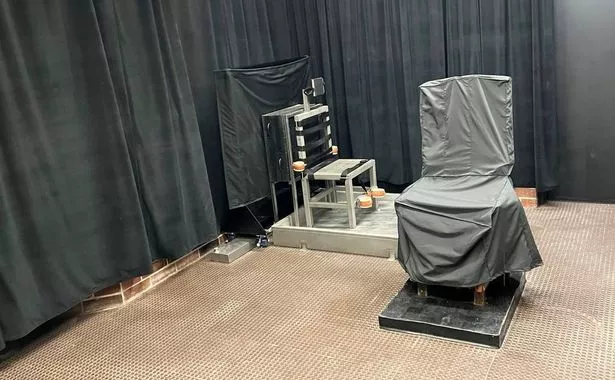An autopsy has revealed that South Carolina death row inmate Mikal Mahdi ‘suffered’ longer than the 10-15 second window he was supposed to after being shot in the heart by a firing squad
01:33, 09 May 2025Updated 01:37, 09 May 2025

Lawyers representing a South Carolina death row inmate who was executed by firing squad on April 11 claim the state ‘mishandled’ the execution, leading to Mikal Mahdi experiencing an extended period of suffering.
Mikal Mahdi, aged 42, received three shots to his heart from trained volunteer marksmen in April.
However, it took the inmate four full minutes to die. An autopsy later revealed that Mahdi endured minutes of agony beyond the expected 10-15 seconds.
A picture of Mahdi’s torso showed only two apparent entry points, despite there being supposed to be three. This means that one shot missed his center of mass entirely.
READ MORE: Brit hiker, 25, missing in New Zealand after planning to climb popular mountain days agoREAD MORE: Hilarious age gap ‘hostage’ tiktok video has an ending you will not believe

The bullets struck his pancreas, liver and lower lung, largely missing his heart, reports the Mirror US. During execution by firing squad, inmates have their heads shrouded with a black hood and wear a prominent red mark on their chests.
What did Mahdi’s pathology report say?
The state-appointed pathologist, Dr. Bradley Marcus, stated that there were two gunshot entries about half an inch large on Mahdi’s chest. He did speculate the possibility of three shots being fired, noting: “It is believed that gunshot wound labeled (A) represents two gunshot wound pathways.”
However, Dr. Jonathan Arden, brought in by Mahdi’s legal team, submitted to the court that having both bullets penetrate through a single entry would be “extraordinarily uncommon” and he also pointed out Dr. Marcus’ astonishment regarding this discovery.
“The shooters missed the intended target area and the evidence indicates that he was struck by only two bullets, not the prescribed three. Consequently, the nature of the internal injuries from the gunshot wounds resulted in a more prolonged death process,” said Arden.
“Among the questions that remain: did one member of the execution team miss Mr Mahdi entirely? Did they not fire at all? How did the two who did shoot Mr Mahdi miss his heart? Did they flinch or miss because of inadequate training? Or was the target on Mr. Mahdi’s chest misplaced? The current record provides no answers,” Madhi’s attorneys wrote to the court.

Witnesses described the moments after the condemned man was shot to death with some shock as they heard him cry out and groan. “Mahdi had a grown. I won’t call it a scream but it like a groan or some indication of pain immediately after he was shot. You could see a number of shallow breaths that happened after that,” said Associated Press reporter Jeffrey Collins, who witnessed the execution.
Why did Mahdi die by firing squad?
Mahdi, 42, chose to die by three bullets to the heart instead of lethal injection or the electric chair. On March 7, Brad Sigmon was executed in the first US firing squad death in 15 years and only the fourth since 1976.
The others all occurred in Utah.
Mahdi, 42, was handed the death penalty for the 2004 murder of 56-year-old Capt. James Myers of the Orangeburg Public Safety Department. Myers was fatally shot after finding Mahdi hiding in a shed on his property.
Mahdi then set the officer’s body ablaze. Three days prior, Mahdi had also killed a convenience store clerk, to which he pleaded guilty.
Mahdi’s last appeal was rejected by the South Carolina Supreme Court, and his legal team’s plea for clemency was not approved by Governor Henry McMaster, who has never granted a clemency petition.









